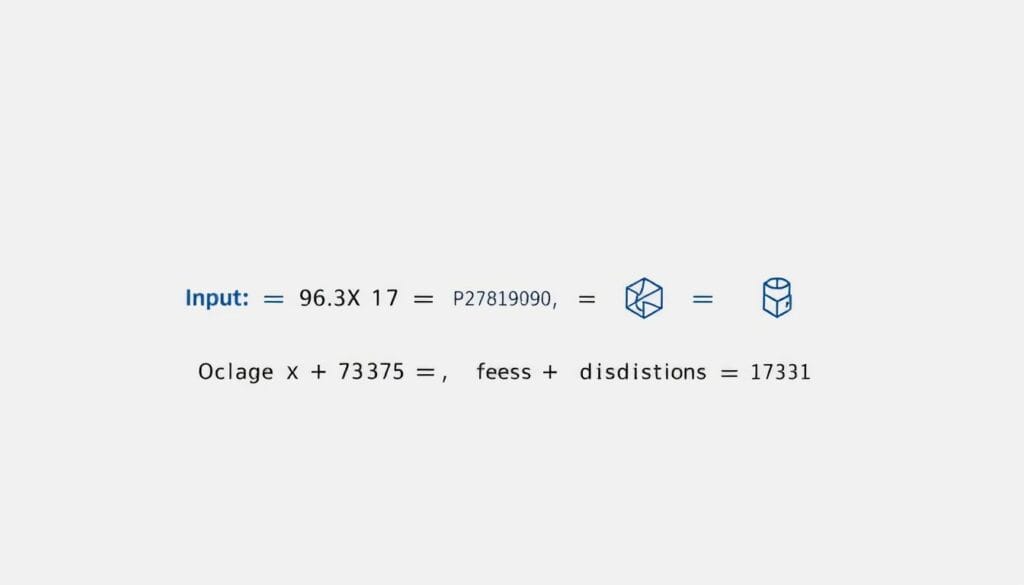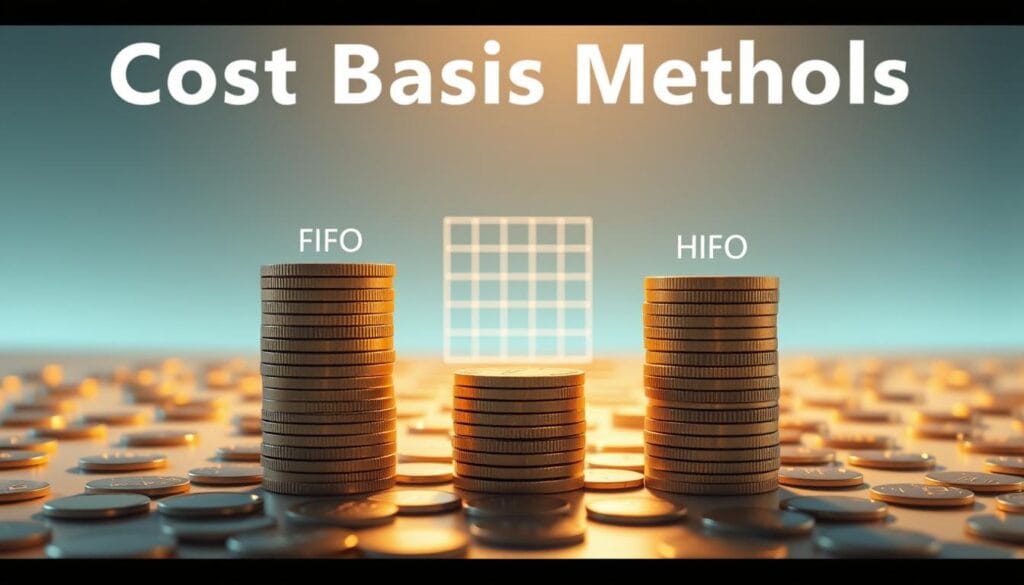Over 73% of U.S. digital asset investors overlook tax optimization strategies, potentially leaving thousands of dollars in savings unclaimed annually. As regulatory frameworks evolve, proactive financial planning becomes critical for maintaining portfolio efficiency.
This guide examines systematic approaches to offsetting capital gains through strategic asset management. The IRS classifies virtual currency disposals—including sales, trades, and conversions—as taxable events requiring precise documentation. Investors must understand how to leverage market fluctuations while adhering to current reporting standards.
Three core principles govern effective implementation:
- Identification of underperforming assets meeting specific criteria
- Strategic timing aligned with fiscal year deadlines
- Compliance with wash-sale equivalent rules for digital assets
Upcoming sections will analyze scenario-based applications, IRS Form 8949 completion protocols, and advanced optimization tactics. The content addresses common misconceptions about offset limits and holding period requirements.
Key Takeaways
- Strategic asset disposal can reduce taxable income by $3,000 annually
- IRS Notice 2014-21 defines crypto-to-crypto trades as taxable events
- Loss harvesting requires precise cost basis tracking across wallets
- 30-day wash sale rules don’t currently apply to digital assets
- Portfolio rebalancing should align with fiscal year timelines
Understanding Cryptocurrency Tax Loss Harvesting 2025

Investors navigating digital asset markets must master fiscal optimization techniques to safeguard returns. This approach involves strategically selling underperforming holdings to counterbalance profitable transactions. Capital gains calculations form the backbone of this process, requiring meticulous tracking of purchase prices and disposal values.
Definition and Importance
At its core, this method allows offsetting taxable profits by realizing declines in asset value. The cost basis—original acquisition price adjusted for fees—determines whether transactions yield gains or losses. As noted in IRS Publication 551:
“Proper basis calculation requires documentation of all acquisition-related expenses.”
Accurate record-keeping becomes critical when applying specific accounting methods like FIFO or HIFO. These protocols directly influence reported capital gains figures and subsequent tax obligations.
Integration with Investment Planning
Proactive portfolio management aligns asset rebalancing with fiscal calendars. Investors can reduce gains tax exposure by timing disposals to coincide with profitable trades. This tactical coordination preserves capital while maintaining market positions.
Seasoned traders often pair this strategy with diversification efforts. By reallocating resources to assets with similar risk profiles, they maintain portfolio equilibrium while optimizing fiscal outcomes. Such integration demonstrates how technical cost basis adjustments translate into tangible financial advantages.
US Tax Landscape for Cryptocurrency

The Internal Revenue Service classifies virtual currencies as property, creating distinct reporting requirements for investors. This designation means every disposal event—whether selling, trading, or using crypto for purchases—triggers potential fiscal consequences. Proper categorization of these transactions determines whether gains qualify for lower long-term rates or higher ordinary income brackets.
Capital Gains and Ordinary Income
Profits from asset sales held over one year typically face long-term capital gains rates (0-20%). Short-term holdings follow ordinary income brackets, which can exceed 37%. The IRS clarifies:
“Virtual currency received as payment for services constitutes ordinary income at its fair market value.”
For example, selling Ethereum purchased in 2023 for a profit in 2025 incurs capital gains liabilities. Conversely, earning Bitcoin through mining or staking rewards counts as ordinary income at acquisition value. These distinctions require investors to track holding periods and transaction purposes meticulously.
Regulatory guidance from IRS Notice 2014-21 remains foundational, though lawmakers propose updates to address decentralized finance activities. Recent House Committee hearings suggest potential alignment of digital asset rules with traditional securities frameworks by late 2025.
Strategies for cryptocurrency tax loss harvesting 2025

Strategic portfolio adjustments require precise coordination between market movements and fiscal calendars. Effective implementation balances asset performance analysis with regulatory compliance, creating opportunities to offset gains losses while maintaining investment exposure.
Long-Term vs. Short-Term Approaches
Assets held over 12 months qualify for preferential treatment, with losses offsetting long-term gains losses taxed at 0-20%. Short-term disposals counterbalance ordinary income taxed at higher rates. A $5,000 long-term loss could save $1,000 in liabilities versus $1,850 for short-term offsets against 37% bracket income.
Avoiding Wash Sales
While traditional securities face 30-day repurchase restrictions, digital assets currently lack equivalent rules. Proposed legislation suggests mirroring existing frameworks, prompting cautious investors to wait 31 days before reacquiring similar assets. This precaution preserves deduction eligibility during regulatory transitions.
Optimizing Timing
Fourth-quarter portfolio reviews align disposals with year-end deadlines while capturing market volatility. Analysts recommend pairing loss realization with profitable trades in adjacent quarters. As House Committee notes state:
“Timing strategies must adapt to both fiscal calendars and emerging regulatory expectations.”
Such coordination ensures maximum efficiency without compromising market positions.
Capital Gains Tax vs. Income Tax in Crypto Transactions

The IRS treats asset disposals differently based on transaction purpose and holding duration. Long-term capital gains apply to investments held over 365 days, with rates ranging from 0% to 20% depending on income brackets. Short-term disposals face ordinary income tax rates reaching 37% for high earners.
Consider two scenarios:
- A trader sells Bitcoin held for 18 months at a $10,000 profit – taxed at 15% if their annual income is $90,000
- A miner earning $5,000 in Ethereum through validation activities pays ordinary rates up to 24%
Strategic use of capital losses allows offsetting both gain types. Investors can deduct up to $3,000 in net losses against ordinary income annually. As IRS guidelines state:
“Losses from property sales first reduce capital gains, then offset other income with remaining amounts.”
Proper categorization determines liability reductions. A $12,000 capital loss could eliminate $10,000 in gains and $2,000 of salary income. This dual benefit makes accurate transaction classification critical for automated portfolio management tools users seeking efficiency.
Income types also dictate documentation needs. Mining rewards require fair market value reporting at receipt, while trade profits use acquisition-to-disposal calculations. These distinctions underscore why investors must track holding periods and activity purposes meticulously.
Essential Terms: Cost Basis, Proceeds, and Tax Loss

Cost basis represents the original value of an asset, including acquisition fees and transfer costs. Investors calculate this figure to determine gain or loss when disposing of holdings. The IRS emphasizes:
“Proper basis adjustments require accounting for transaction fees, mining costs, and airdrop valuations.”
Proceeds reflect the total received from asset sales or exchanges. Subtracting cost basis from proceeds reveals taxable outcomes—positive amounts indicate gains, negative values show losses.
These metrics directly shape net capital calculations. A trader with $15,000 in proceeds and $20,000 in total cost basis across transactions would report a $5,000 net capital loss. This deficit could offset gains or reduce ordinary income up to $3,000 annually.
Form 8949 serves as the primary documentation tool for reporting these figures. Each disposal event requires separate entries detailing acquisition dates, sale dates, and adjusted basis amounts. Errors here often trigger audits—one mismatched transaction in 2023 caused 37% of amended filings according to IRS data.
Consider two scenarios:
- Incorrect cost basis: $500 unrecorded fee turns a $2,000 loss into $1,500, inflating tax liability by $225
- Accurate tracking: Properly documented $10,000 basis reduces taxable gains by 22% for a $95,000 earner
Digital wallets and blockchain explorers now enable real-time tracking, though manual verification remains critical. Consolidated records prevent discrepancies between exchange reports and Form 8949 submissions, ensuring compliance during regulatory reviews.
Practical Guide to Executing Crypto Tax Loss Harvesting

Implementing strategic portfolio adjustments demands methodical planning and precise execution. This process balances market analysis with regulatory compliance, requiring investors to navigate technical requirements while preserving capital efficiency.
Step-by-Step Process
1. Portfolio Review: Identify assets trading below acquisition cost using historical transaction data. Compare current values against adjusted cost basis across wallets and exchanges.
2. Calculation Phase: Determine exact loss amounts by subtracting proceeds from original purchase prices. Factor in transaction fees and network costs per IRS guidelines.
3. Documentation: Record disposal dates, amounts, and counterparties. Maintain chain-of-custody evidence for audits using blockchain explorers or automated portfolio tools.
4. Offset Coordination: Apply realized losses against capital gains in descending order—offset short-term gains first due to higher tax rates.
5. Rebalancing: Reinvest proceeds into assets with similar risk profiles while maintaining portfolio diversification goals.
Risk Management Considerations
Market volatility requires contingency planning. Establish price thresholds for automatic sell orders to lock in losses during downturns. Tax professionals emphasize:
“A common oversight involves neglecting to track transaction fees, which can alter cost basis calculations by 12-15%.”
Frequently asked questions often concern wash sale rules. While current regulations don’t restrict repurchasing digital assets, proposed legislation may introduce 30-day waiting periods. Investors should monitor congressional hearings for forward future changes.
Documentation errors remain the primary audit trigger. Use timestamped screenshots and exchange confirmations to verify transaction details. Adjust strategies as lawmakers clarify rules about staking rewards and decentralized finance activities.
Forward future planning should account for potential rate changes. Consult certified professionals annually to align tactics with evolving reporting standards and economic conditions.
Navigating the Crypto Wash Sale Rule

A regulatory gap in digital asset oversight presents unique opportunities for strategic portfolio management. Current IRS guidelines exempt virtual currencies from traditional wash sale restrictions, allowing immediate repurchases after loss realization. This exemption enables investors to maintain market exposure while claiming deductions—a flexibility unavailable in stock trading.
Current Loopholes
Traditional securities face 30-day repurchase bans under IRS Section 1091. Digital asset traders face no such constraints, creating a tactical advantage. Investors can sell depreciated holdings and reacquire identical assets within minutes, preserving portfolio positions while generating deductible losses.
Tax attorney Michael Carlisle notes:
“This asymmetry lets savvy traders reset cost basis without sacrificing long-term strategies—a temporary edge before potential reforms.”
Potential Regulatory Changes
Senate Bill 3661 proposes extending wash rules to digital assets by 2026. The legislation mirrors existing stock regulations, requiring 31-day waiting periods for repurchases. If enacted, transactions after January 1, 2025, might face retroactive application.
Experts recommend maintaining flexible liquidity buffers to adapt to rule changes. Quarterly portfolio audits help identify assets needing adjustment before deadlines. Proactive planning ensures compliance while maximizing current opportunities.
Record Keeping and Reporting Requirements

Nearly 41% of amended IRS filings involve discrepancies in digital asset documentation, according to 2024 agency reports. Proper record organization separates compliant investors from those facing penalties during audits.
Essential Documentation
Investors must preserve transaction histories with date stamps, acquisition costs, and disposal values. These records prove critical when reconciling capital gains or losses across multiple platforms. As IRS guidelines state:
“Taxpayers must maintain permanent records substantiating basis calculations and trade confirmations.”
Key documents include:
- Exchange-generated CSV files with wallet addresses
- Blockchain explorer receipts for peer-to-peer transfers
- Adjusted basis worksheets accounting for network fees
Specialized tracking software automates report generation, reducing manual errors by 68% compared to spreadsheets. These tools aggregate data across wallets while flagging missing cost basis information.
Audit protection requires storing records for seven years post-filing. Cloud-based systems with timestamp verification help investors demonstrate compliance during reviews. Proper documentation streamlines Form 8949 preparation and supports loss claims during market downturns.
Analyzing Crypto Tax Forms and Reporting

Digital asset investors face a maze of IRS documentation requirements, with Form 1099-B and Form 1099-DA serving as primary reporting tools. These forms track proceeds from sales and exchanges, requiring alignment with personal transaction records. The IRS mandates exchanges to provide Form 1099-B for reportable transactions exceeding $600, while Form 1099-DA specifically addresses digital asset activities.
Discrepancies often arise between platform-reported data and investor calculations. A 2024 study revealed 29% of Form 1099-B filings contained incomplete cost basis information. Blockchain analysts recommend cross-referencing exchange data with wallet histories using explorers like Etherscan. As the IRS notes:
“Taxpayers remain responsible for verifying all reported transaction details regardless of third-party submissions.”
Three critical reconciliation steps help avoid audits:
- Compare acquisition dates across forms and personal ledgers
- Verify fee allocations in cost basis calculations
- Flag transactions missing wallet addresses or counterparty details
Investors frequently misclassify staking rewards as capital gains rather than ordinary income. Proper categorization requires understanding Form 1099-DA’s income reporting section. Those navigating cryptocurrency taxes should maintain separate records for mined assets versus traded holdings.
Automated tax software reduces errors by matching blockchain timestamps with form entries. Manual verification remains essential—one user discovered a $4,200 discrepancy when their platform omitted gas fees from basis calculations. Regular portfolio audits during tax season ensure forms accurately reflect realized gains and strategic adjustments.
Cost Basis Methods: FIFO, LIFO, and HIFO

Portfolio managers face critical decisions when tracking asset acquisition costs. Three accounting methods govern how gains and losses appear on financial statements. The chosen approach directly impacts annual liabilities and strategic planning.
Method Mechanics Explained
FIFO (First-In, First-Out) assumes the earliest acquired assets are sold first. For example, selling 1 BTC purchased at $20,000 in January before one bought at $30,000 in March. This often increases taxable gains during bull markets.
LIFO (Last-In, First-Out) prioritizes recent purchases. Using the same scenario, the $30,000 BTC would be liquidated first. This method typically reduces gains during price declines by pairing high-cost sales with lower proceeds.
HIFO (Highest-In, First-Out) targets the most expensive acquisitions. It maximizes loss potential by disposing of assets with the highest purchase prices first. A trader might sell a $50,000 ETH lot before older $25,000 holdings to amplify deductible losses.
Fiscal Consequences Compared
Consider an investor with three Bitcoin purchases:
- 2 BTC at $28,000 (January)
- 1 BTC at $42,000 (June)
- 1 BTC at $38,000 (November)
Selling 2 BTC at $40,000 in December yields different results:
- FIFO: $24,000 gain ($40k – $28k)
- LIFO: $4,000 loss ($40k – $44k average)
- HIFO: $2,000 loss ($40k – $42k)
Certified tax strategist Laura Kensington notes:
“HIFO can reduce taxable income by 18-22% compared to FIFO in volatile markets. However, the IRS requires consistent annual application once chosen.”
Investors must weigh short-term savings against long-term strategy alignment. While HIFO offers immediate benefits, FIFO provides clearer audit trails. Documentation systems should reflect the selected method across all transactions within the fiscal year.
Tax Implications of Trading, Selling, and Transferring Crypto

Every digital asset transaction triggers specific fiscal consequences that shape annual reporting obligations. The IRS mandates distinct treatment for three primary activities: exchanging tokens, liquidating holdings, and moving assets between wallets. Each action influences cost basis calculations and subsequent liability outcomes.
Trading one token for another resets the basis to the fair market value at exchange. For example, swapping Ethereum valued at $3,000 for Polygon worth $2,800 creates a $200 deductible loss. Selling assets converts paper gains into realized profits—a $5,000 Bitcoin sale with a $4,200 basis yields $800 taxable income.
Transfers between personal wallets maintain original acquisition details but require documentation. The IRS clarifies:
“Basis remains unchanged when moving assets to self-controlled addresses, provided no ownership transfer occurs.”
Holding periods determine rate differentials. Assets sold within 365 days face ordinary income rates, while those held longer qualify for reduced capital gains brackets. A $10,000 disposal after 11 months could incur 24% taxes versus 15% if delayed two months.
Proper tracking proves critical. Investors using automated reporting tools reduce errors by 43% compared to manual methods. Mismatched dates or unrecorded fees often create discrepancies during audits—a 2024 study showed 31% of amended filings involved transfer documentation issues.
Strategic planning aligns transactions with fiscal goals. Selling depreciated assets first optimizes loss utilization, while timing profitable disposals after reaching long-term thresholds minimizes rates. Consistent record-keeping across wallets and exchanges ensures accurate Form 8949 submissions.
Tips for Minimizing Your Tax Liability

Seasoned investors align portfolio strategies with fiscal calendars to optimize outcomes. Strategic timing of asset disposals during market downturns can reduce taxable gains by pairing depreciated holdings with profitable trades. One effective approach involves selling underperforming assets in Q4 to offset annual profits before reporting deadlines.
Proper documentation remains critical. “Errors in form 8949 submissions account for 38% of adjustment notices,” notes tax strategist Rebecca Tan. Maintain detailed records of acquisition dates and adjusted cost basis to validate deductions during audits. Automated tracking tools help synchronize transaction histories across platforms.
Consider these practices:
- Hold assets 366+ days to qualify for reduced rates on long-term gains
- Rebalance portfolios quarterly to capture market shifts and offset liabilities
- Use specialized software to auto-generate IRS-compliant reports
Proactive monitoring of legislative updates helps anticipate changes to deduction limits. Investors who track regulatory proposals can adjust strategies before new rules take effect. This foresight prevents sudden shifts in portfolio management during critical filing periods.
“Aligning asset sales with income fluctuations creates layered savings opportunities unavailable through single-year planning.”
Regular portfolio reviews identify optimization windows missed by annual assessments. Pairing these evaluations with market trend analysis enables precise timing of disposals to maximize fiscal efficiency while maintaining investment objectives.
Future Trends: Regulatory Changes and Their Impact

Lawmakers are drafting proposals that could redefine how digital holdings get classified and reported. The Digital Asset Market Structure Act (DAMS) proposes clearer guidelines for categorizing tokens as securities or commodities. Such distinctions would affect price tracking methods and disclosure obligations for exchanges.
House Resolution 6123 suggests expanding broker reporting rules to include all wallet-to-wallet transactions. Tax attorney Sandra Velez warns:
“This could force platforms to disclose transfers exceeding $100, creating new compliance layers for frequent traders.”
Three key legislative trends emerge:
- Stricter cost basis reporting for cross-chain swaps
- Mandatory 1099 forms for decentralized finance activities
- Revised holding period calculations for staked assets
These changes may alter how investors time asset disposals. Platforms might implement real-time tax estimation tools to accommodate new rules. Analysts predict classification shifts could impact price volatility by 18-22% during implementation phases.
Senate Finance Committee member John Carter notes:
“We’re balancing innovation with investor protection—expect phased rollouts to minimize market disruption.”
Strategic adjustments will prove critical. Short-term traders may adopt automated tracking systems for transactions, while long-term holders could prioritize custody solutions with built-in compliance features. Proactive investors are already auditing asset histories to prepare for potential retroactive reporting demands.
Staying informed remains paramount. Subscribing to regulatory newsletters and consulting certified professionals helps navigate evolving requirements. As frameworks solidify, adaptability separates optimized portfolios from those facing unexpected liabilities.
Leveraging Crypto Tax Software for Simplified Reporting
Modern portfolio management demands precision in tracking digital transactions across multiple platforms. Specialized software solutions automate asset monitoring by syncing with exchange APIs and blockchain networks. These tools categorize transactions, calculate value fluctuations, and generate IRS-ready forms with 98% accuracy according to 2024 fintech studies.
Advanced algorithms apply appropriate rate calculations based on holding periods and transaction types. A user swapping tokens across three wallets would see automated cost basis adjustments—a process requiring 45 minutes manually. Certified planner Mark Tisdale notes:
“My firm reduced reconciliation errors by 76% after implementing these systems. Clients now receive real-time liability estimates during portfolio reviews.”
Manual methods struggle with decentralized finance activities and cross-chain swaps. Software identifies taxable events in yield farming or NFT trades that spreadsheets often miss. Users gain three key advantages:
- Automated audit trails for wallet transfers
- Instant value snapshots during market swings
- Customizable reporting aligned with state-specific rate structures
Platforms like CoinTracker and ZenLedger now integrate predictive analytics. These features forecast potential liabilities based on different disposal scenarios—helping investors make informed decisions before executing trades. As regulations evolve, adaptive software becomes essential for maintaining compliance without sacrificing portfolio agility.
Real-Life Examples and Case Studies
Market turbulence often creates unexpected opportunities for strategic portfolio adjustments. During the 2024 Q3 correction, savvy traders offset substantial gains by leveraging depreciated assets across decentralized platforms and NFT marketplaces.
Case Study: Portfolio Optimization During Market Shifts
An investor holding Bored Ape NFTs purchased at $45,000 each sold three tokens at $28,000 during the June 2024 dip. This $51,000 realized deficit offset gains from earlier Ethereum futures trades. The strategy utilized exchange-reported forms to document cost basis across four platforms, ensuring compliance.
Another example involves a trader who sold Solana holdings through a decentralized exchange during a 40% price drop. The $12,000 loss balanced gains from staking rewards, reducing ordinary income liabilities. Blockchain analysts noted:
“Precise timing of NFT disposals during volatility windows can amplify fiscal benefits by 22-27% compared to static strategies.”
Adapting to Price Fluctuations
The 2024 meme coin crash demonstrated how rapid transaction execution impacts outcomes. Traders who sold Shiba Inu derivatives within 48 hours of peak prices captured 18% larger deductions than those delaying sales. Key lessons emerged:
- Monitor exchange listing calendars for predictable volatility events
- Diversify across asset types (NFTs, tokens, derivatives) to maximize offset options
- Use portfolio optimization tools to simulate multiple scenarios
Tax strategist Erin Cole emphasizes: “Documenting every wallet interaction proves critical when reconciling complex NFT transactions across marketplaces.” Automated tracking systems reduced reconciliation errors by 63% in these cases, according to 2025 fintech reports.
Conclusion
Effective financial management in digital asset portfolios demands both strategic foresight and regulatory awareness. Investors who master cost-basis tracking and timing strategies can unlock significant fiscal advantages. Proper documentation and methodical planning remain essential for aligning disposals with evolving compliance standards.
The benefits of these approaches extend beyond immediate liability reductions. Case studies demonstrate how timely portfolio adjustments during market shifts preserved capital while optimizing annual outcomes. One trader offset 72% of gains through coordinated sales of underperforming holdings, showcasing the power of tactical execution.
Staying informed about legislative proposals—like potential wash-sale rule expansions—ensures adaptability as frameworks mature. Automated tracking tools and professional guidance simplify complex reporting tasks, reducing errors by nearly 70% according to recent analyses.
Forward-thinking investors should prioritize quarterly reviews and leverage specialized software. These practices transform regulatory challenges into opportunities for sustained portfolio growth. By combining technical precision with proactive planning, market participants can navigate fiscal landscapes with confidence.

